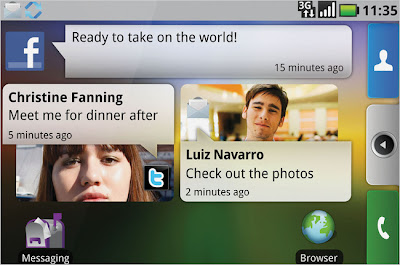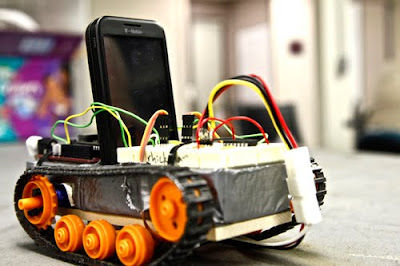

Google and Intel have teamed with Sony to develop a platform called Google TV to bring the Web into the living room through a new generation of televisions and set-top boxes.
The platform is reportedly based on Android & Intel’s Atom chips, and would allow developers to combine web-based data such as social networking or news with video streams, as well as a slew of other applications, both currently imaginable and not.
The move is an effort by Google and Intel to extend their dominance of computing to television, an arena where they have little sway. For Sony, which has struggled to retain a pricing and technological advantage in the competitive TV hardware market, the partnership is an effort to get a leg up on competitors.
The partners envision technology that will make it as easy for TV users to navigate Web applications, like the Twitter social network and the Picasa photo site, as it is to change the channel.
Some existing televisions and set-top boxes offer access to Web content, but the choice of sites is limited. With the open involvement of 3rd party developers, as with Android, the company hopes the move will encourage the same outpouring of creativity that consumers have seen in applications for cellphones.
Google is expected to deliver a toolkit to 3rd party developers within the next couple of months, and products based on the software could appear as soon as around the same period of time.
The three companies have approached Logitech, which specializes in remote controls and computer speakers, for peripheral devices, including a remote with a tiny keyboard.
The project has apparently been under way for several months but Spokespeople for Google, Intel and Logitech declined to comment. The companies appear to be hiring for Android-related jobs. Intel, for example, has listed jobs for senior application engineers with Android programming experience who can help extend Intel’s technology “from PC screen to mobile screen and TV screen.”
Logitech also has several job listings for Android developers, including a position for an “embedded software engineer” with experience building “audio and video products based on the Android platform.”
Jacob Hsu, chief executive of Symbio, a contract engineering firm that does work for consumer electronics companies, said there was rising interest in set-top box technology among the traditional computing players. “The boxes are just getting more and more powerful, so there’s more you can do with them,” he said.
For Google, the project is a move to get a foothold in the living room as more consumers start exploring ways to bring Web content to their television sets. Google wants to aggressively ensure that its services, in particular its search and advertising systems, play a central role.
Google has built a prototype set-top box, but the technology may be incorporated directly into TVs or other devices.
The Google TV software will present users with a new interface for TVs that lets them perform Internet functions like search while also pulling down Web programming like YouTube videos or TV shows from Hulu.com. The technology will also allow downloadable Web applications, like games and social networks, to run on the devices.
It has been rumoured that Google TV would use a version of Google’s Chrome Web browser, which currently does not work on Android phones.

Google’s efforts to break into television advertising date back three years. Through a program called Google TV Ads, the company sells advertising on a handful of satellite and small cable television systems, as well as some cable networks. Google says thousands of advertisers have signed up for the program, but analysts say they believe the amount of revenue generated is too small to have a significant impact on Google’s overall business.
The partners will face a crowded field. In addition to the makers of traditional cable and satellite set-top boxes, Cisco Systems and Motorola, many others have entered the game, including Microsoft, Apple, TiVo and start-up companies like Roku and Boxee, which already stream video from Netflix, MLB.com and other Web sites directly to television sets. Yahoo is also promoting a TV platform that uses small software programs called widgets to use certain Web services.
Anthony Wood, founder and chief executive of Roku, said that a browser-based Google TV box would require an expensive chip and would probably cost $200 or more, compared with a cheaper alternative, like Roku’s $80 device. The device streams content from more than a dozen sites, including Netflix, Blip.TV and Amazon.com. Moreover, “on the TV, people want specific TV apps, not a browser experience,” he said.
For Intel, the effort represents a way to get its line of energy-efficient Atom chips, currently found in laptops, into TVs. Intel executives have talked for a couple of years about creating PC-like TVs, contending that it will take the horsepower of a mainstream chip to play high-definition movies well on bigger screens. Any success with TVs would help Intel get into a new, high-volume market and possibly offset some of the pressure the company now feels from rivals creeping up into computers.
The Google TV software will be open source at its core, meaning that device and TV makers should have broad access to it.
Sony, however, hopes to gain an edge over competitors by bringing out the first appliances and possibly TVs running the software, perhaps under a new brand. The Japanese consumer electronics giant is not expected to put its movie content from Sony Pictures directly on the devices but will probably have a link to a digital store.
The Google TV project was apparently advanced enough that Google had begun a limited test with Dish Network, one of Google’s partners in the TV Ads program.
.. more details as they come to hand.




























